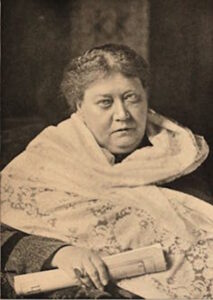For thousands of years, humans have used symbols to communicate values, ideas, and profound concepts. Symbols require no words, yet they say so much.
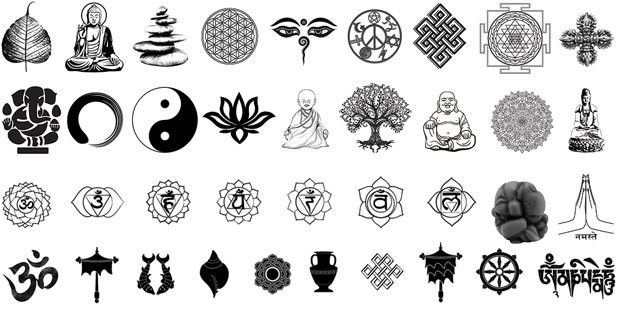
Symbols aren’t just powerful ways to communicate, they’re also extremely personal. You may find yourself drawn to a certain symbol because it speaks to something deep within you, something that defies an easy explanation. The right symbol can reinforce your beliefs, offer strength during difficult times, or remind you to seek calm and peace.
On the pages to follow, we invite you to explore the significance and background behind various spiritual symbols. Here, you’ll find traditional Eastern icons as well as more universal symbols, such as the Tree of Life and the Cairn.
Connect with the imagery that speaks to you, and let it guide you along your path.
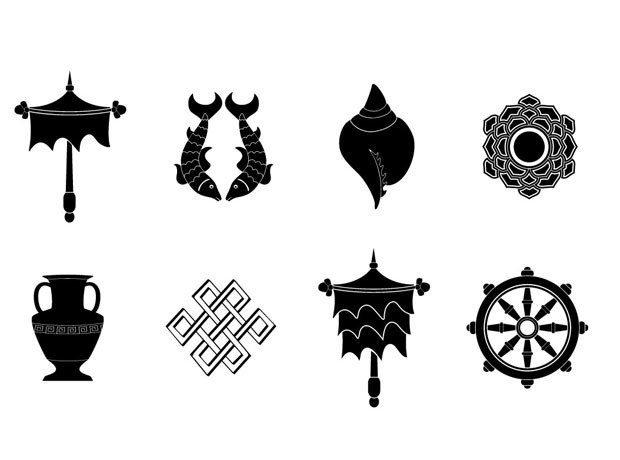
8 Auspicious Symbols
In Tibetan Buddhism, these symbols are said to be the luckiest and most sacred of all. Frequently seen in combination with one another, each represents a different component of Buddhist philosophy.
The Parasol: Representing protection and shelter, the Parasol shows how Buddha’s teachings will shield us from the “heat” of forces like greed and lust.
The Golden Fish: A symbol of joy and liberation, the Fish represent freedom from samsara, or the cycle of life, death, and rebirth.
The Conch Shell: Used to call individuals to prayer, the Conch’s resounding trumpet represents the influence of dharma and its ability to awaken us from ignorance.
The Lotus:A symbol of enlightenment, the Lotus mirrors human suffering. Growing through muck in order to blossom, the Lotus shows that we too may blossom through Buddha’s wisdom.
The Urn: A symbol of abundance, the Urn is evocative of Buddha’s spiritual wealth, demonstrating that there is no end to his knowledge and wisdom.
The Infinite Knot:With no beginning or end, the Infinite Knot reflects Buddha’s infinite compassion as well as the interconnectedness of all living things.
The Banner: Also known as the Flag, the Banner represents victory over ignorance and the obstacles that block the path to enlightenment.
The Wheel:The Wheel of Law, or Dharmachakra, is a summation of Buddha’s teachings. The eight spokes are Buddha’s Eightfold Path, while the inner hub is the discipline required to follow it.

Bodhi Leaf
Emblem of Enlightenment
As a young man seeking spiritual wisdom, Buddha resolved to meditate under a Bodhi tree and stay there as long as necessary. He would move only when he found the answers he sought. It was there, after 49 days of meditation, that he achieved enlightenment.
Alluding to this powerful moment, the Bodhi tree and the Bodhi leaf are symbols of awakening and spiritual enlightenment. They also point to the importance of perseverance. In spirituality, and in life, it is rare for the answers to just come to us: it is only through humble dedication, and profound patience, that we arrive at a place of peace.
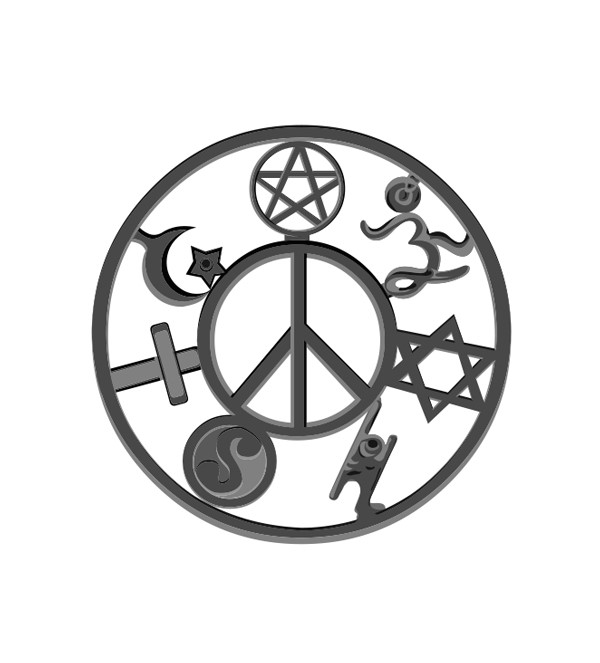
Coexist
Diversity is Beautiful
Spotted on bumper stickers, t-shirts, and more, the beloved Coexist symbol resonates across all different beliefs and backgrounds. A combination of symbols from various spiritual traditions, it shows how we can live peacefully as one. Though our differences may seem vast, when we stand together, we are beautiful, united, and whole.
There have been many variations of the Coexist symbol. However, the major icons used are fairly consistent. These include a star and crescent moon (for Islam), a peace sign, Om (Hinduism), the Star of David (Judaism), a silhouette of Buddha (Buddhism), the Yin Yang (Taoism), and a cross (Christianity).
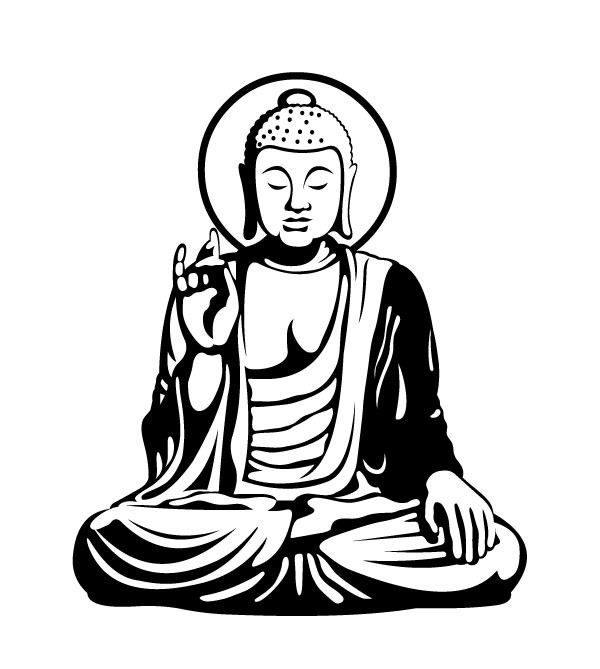
Buddha
The Awakened One
Teacher, philosopher, leader: Buddha was many things. But at his core, Buddha was a man who sought to understand suffering, and in the process, founded an entire spiritual movement.
Born in 563 BCE in Nepal, Buddha was originally referred to as Siddhārtha and lived a rich, pleasant life as the prince of the Sakyas. After seeing suffering for the first time as a young man, he renounced his title and embraced asceticism. He eventually achieved enlightenment after meditating under a Bodhi tree. From there on, Buddha sought to teach others about the nature of suffering and the path to liberation. Characterized by unique features–long ears, spiraling curls–Buddha’s image and his story continue to inspire Buddhists and laymen alike.
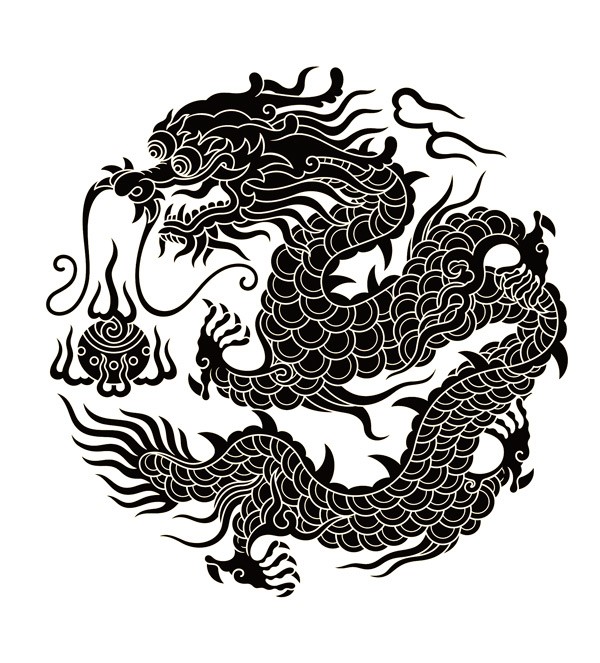
Dragon
Benevolent Beasts
From St. George’s famous battle in the bible to the colorful creatures spotted in Chinese New Year parades, dragons appear all over the world and throughout history. While dragons are often depicted in the West as ferocious monsters, in the East they have different connotations. In Chinese folklore, dragons are auspicious creature symbolizing strength, life, and prosperity. Chinese, Japanese, and Korean legends associate them with water realms, where they serve as guardians of rivers, oceans, and rain. In Hinduism and Buddhism, mythical and semi-divine serpent beings known as Naga are occasionally portrayed as dragons.
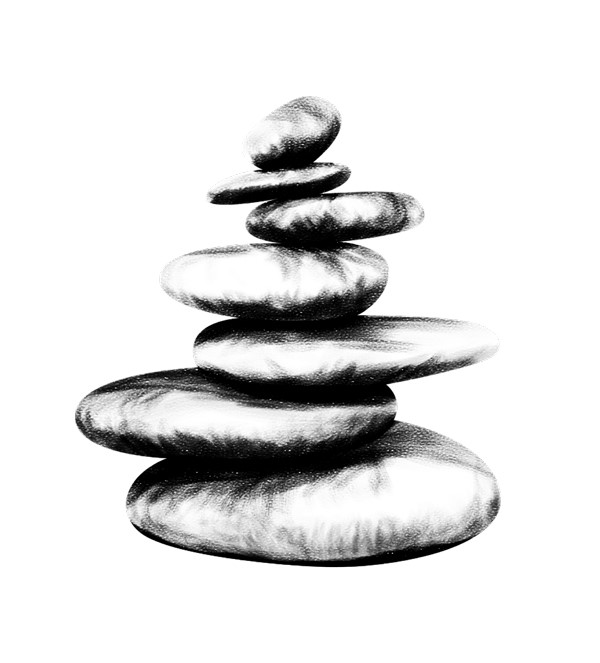
Cairn
Hope For The Journey Ahead
Cairns are simple rock formations, used as landmarks to guide travelers along a path or to mark a sacred place. Cairns are some of the most universal manmade structures, and the practice of making cairns goes back thousands of years. From the Arctic territories of the Inuit to temples in Korea, cairns have been spotted all over the world.
Cairns have evolved as symbols of friendship, safety, and direction. They offer guidance for those wandering life’s path. To stumble upon a cairn is to know that you aren’t alone, that someone has traversed the same terrain you now find yourself on. In this way, cairns remind us to never give up, that the journey is yours to make as long as you keep traveling.

Dream Catcher
Sacred Hoop
Dreamcatchers are Native American wood hoops crafted with a net in the center. They’re often embellished with objects like beads and feathers. Derived from the Ojibwe and Lakota tribes, dreamcatchers were originally used to protect children from bad dreams. Tribal elders fashioned them from willow and sinew and then hung them over a cradle or child’s bed. Like bugs in a spider’s web, the hoop’s net was said to trap nightmares and channel good dreams through the net’s hole.
Today, dreamcatchers have been adopted by countless individuals as symbols of protection and good luck. Hanging dreamcatchers in the home, or even wearing dreamcatcher jewelry, is thought to trap negative vibes in order to keep the owner safe from harm.

Chakras
Your Body’s Life Force
Chakras are energy centers within the body. There are seven main chakras that are aligned along the spine, starting from the base of the spine and ascending to the crown of the head. Each is filled with a vital life force known as prana. As they spin and draw power from this life force, the chakras exert influence over different psychological, physical, emotional, and spiritual parts of the self.
Crown
Chakra – Sahasrara
Top of the head
Rules over wisdom, consciousness, and divine knowledge.
Third
Eye Chakra – Ajna
Forehead
Rules over intuition, imagination, memory, and psychic abilities.
Throat
Chakra – Vishuddha
Center of the neck
Rules over communication and expression.
Heart
Chakra – Anahata
Center of the chest
Rules over love, relationships, compassion, and acceptance.
Solar
Plexus Chakra – Manipura
Stomach
Rules over inner knowledge, power, discipline, and autonomy.
Sacral
Chakra – Svadhisthana
Lower abdomen, sexual organs
Rules over our procreation, sexuality, pleasure, and creativity.
Root
Chakra – Muladhara
Base of the spine
Rules over survival, security, and our most basic needs.

Endless Knot
Inextricable, Intertwined, Infinite
The Infinite Knot, also known as the Endless Knot, is a line with no beginning or end that radiates both calm and movement. It represents the idea that everything in this world is interconnected. It is also symbolic of the Buddha’s infinite compassion.
Dharma is continuous and inexorable, while time is but an illusion. The Knot of Infinity symbolizes that truth. The Knot also represents the idea that material life and religious thought are intertwined: the search for enlightenment does not mean giving up on worldly responsibilities.
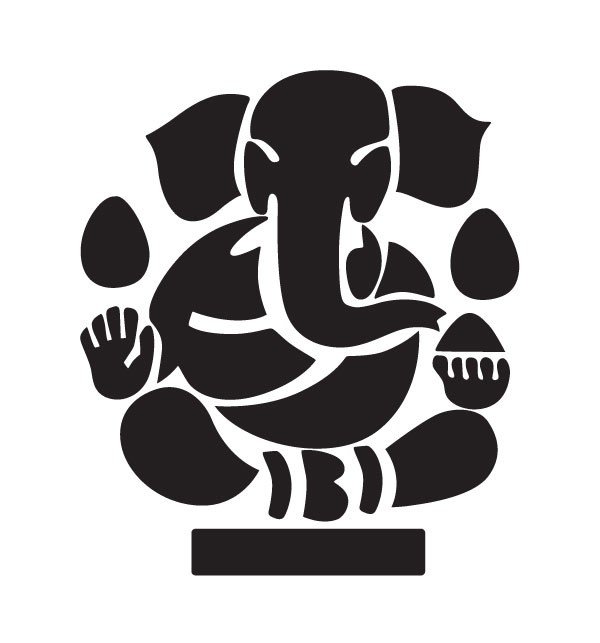
Ganesh
The Remover of Obstacles
A symbol of wisdom, Ganesh is one of the most revered Gods in Hinduism. Known for his kindness, he is recognized by his elephant head and rotund belly. With his ability to remove obstacles and ensure success, Ganesh is often called upon at the beginning of new ventures.
Though Ganesh is a Hindu deity, he also appears in Buddhism and is the only Hindu God regarded as a Bodhisattva. He takes many different forms. Some Tibetan scriptures depict him as Vinayaka, a demon who must be propitiated in order to avoid destruction. Other times, he is Nrtta Ganapati, the dancing God and destroyer of obstacles who made his way into Tibet through Nepal.

Jizo
Benevolent Protector
Jizo is a Bodhisattva in Japanese Mahayana Buddhism, originally known in Sanskrit as Ksitigarbha. He is worshipped primarily in East Asia, where statues of his likeness can be spotted on roadsides. He is often depicted as a shaven-headed monk with child-like features and a large cloak.
Revered for his self-sacrifice, Jizo is said to have delayed nirvana in order to help others. He is a guardian of travelers and firefighters. He keeps watch over the souls of children, especially those who pass away before their parents.
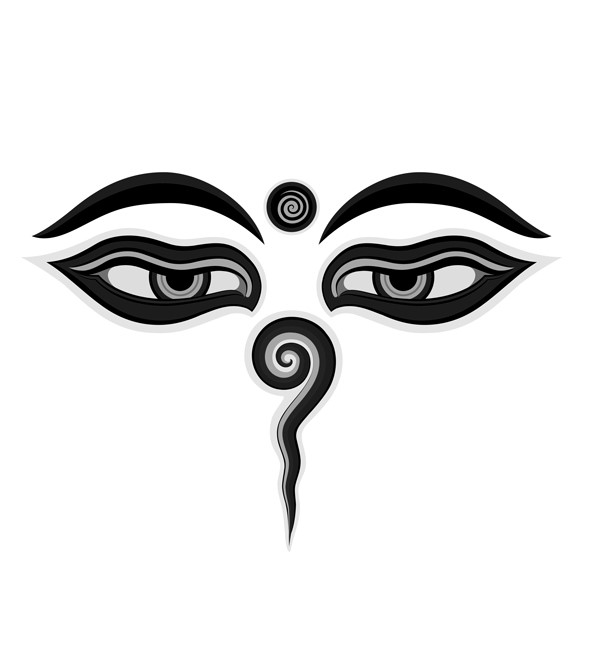
Eyes of Buddha
Gaze of Wisdom
Visitors to Buddhist stupas in Nepal cannot help but notice the huge pair of eyes painted around the main towers. These are the “Eyes of the Buddha” that stare out in all four directions, a dramatic symbol of the Buddha’s all knowing, all seeing gaze.
Between the Wisdom Eyes, as they are also known, is a curving symbol that resembles a question mark. This is Nepali for the number 1. It symbolizes the oneness of the universe and denotes the one path towards enlightenment – this being the teachings of the Buddha. The mark is also the Buddha’s ‘third eye’, a symbol of his wisdom and infinite perception.

Hamsa
Palm of Protection
The hamsa symbol depicts an open right hand, symmetrically drawn, and often with an eye in the palm’s center. Seen throughout the Middle East and Northern Africa, it’s also known as the Hand of Fatima and the Hand of Miriam. The hamsa represents strength and power and is widely regarded as a token of protection. Worn as an amulet or hung in the home, the hamsa is said to ward off the Evil Eye, a malevolent stare which brings harm and misfortune.
No one is entirely sure of the hamsa’s origins. Some date it back to the ancient Phoenicians, who used hands to represent the lunar goddess, Tanit. Today, it holds significance in multiple traditions. In Judaism, its five fingers represent the five books of the Torah. In Islam, they stand for the Five Pillars of Islam. The hamsa is also reminiscent of Buddhist and Hindu mudras, with the five fingers representing the five senses.
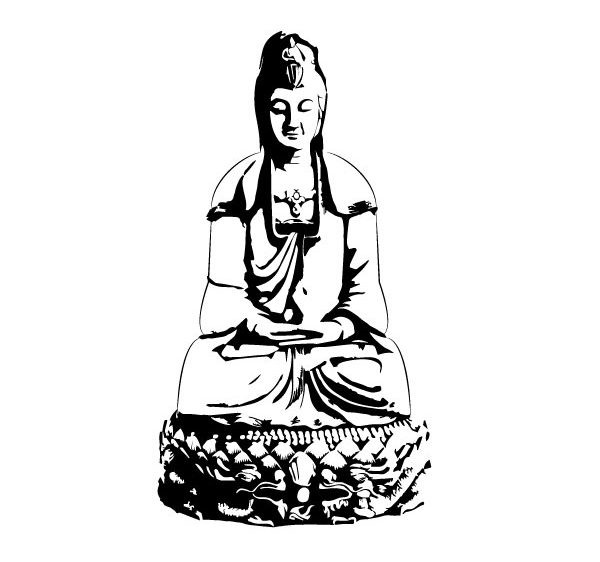
Kuan Yin
Compassion Personified
Greatly revered across different Buddhist traditions, Kuan Yin is an example of the “sacred feminine”. Also known as Kwan Yin and Guan Yin, Kuan Yin first appeared in Chinese scriptures around 400 CE. She is believed to be the female manifestation of Avalokitesvara, the Bodhisattva of Compassion.
Depicted as an ethereally lovely Goddess, Kuan Yin is a symbol of unconditional love, kindness, and mercy. She shields and cares for the sick, the unwanted, the unlucky, and the poor. As one who protects women and children, she is also linked to fertility. Followers turn to her in times of need, fear, or misfortune. With just a glance at her graceful countenance, you too may find her to be a source of calm and comfort.
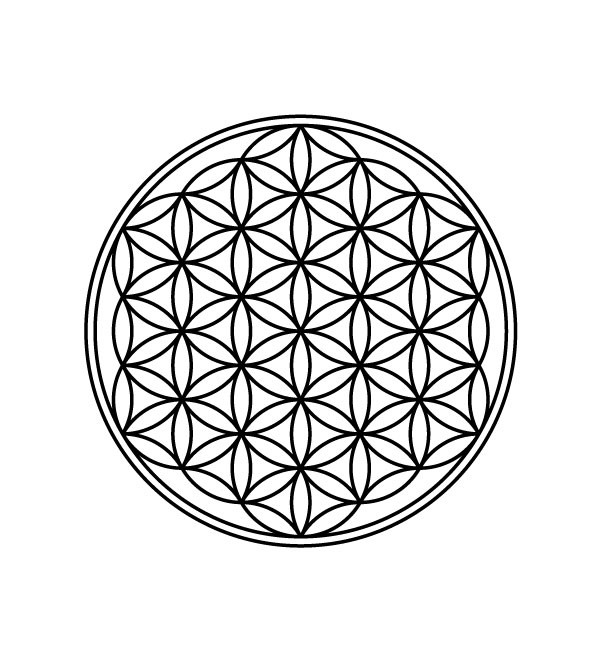
Flower of Life
Seeds of Connection
The Flower of Life is made up of geometrically-spaced, overlapping circles. The center of each circle rests on the circumference of six surrounding circles. This interlocking pattern demonstrates the interconnectedness of all living things and the ways we are inextricably linked to one another.
The Flower of Life’s circular patterns have appeared in the art of various cultures throughout history. An integral part of Sacred Geometry, the Flower of Life is said to mirror the patterns of cell division, and thus is seen as a model of creation itself.
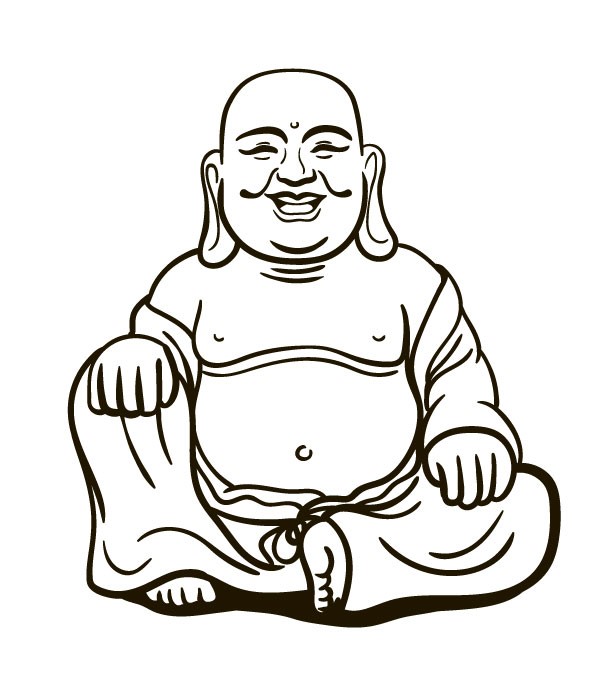
Happy Buddha
A Joy to Behold
Full of exuberance, Happy Buddha is often mistaken for Siddhārtha Gautama, the founder of Buddhism. But the image of Happy Buddha is actually based on a wandering Chinese monk, Budai (Hotei, in Japanese), who lived centuries ago.
Happy Buddha is believed to be Maitreya, or the Buddha to come. His plump figure and benign countenance suggest magnanimity and plenitude. Also called Laughing Buddha, his signature smile is symbolic of pure joy. Happy Buddha is considered a symbol of good luck, and it is thought that rubbing his big head or belly brings fortune and wealth. At the same time, his walking stick and satchel remind us to pay attention to the journey before us, not just the destination.

Lotus Flower
Beautifully Triumphant
One of the most poetic and inspiring flowers to behold, the lotus is noted for the wondrous way that it grows: before it can blossom in the sun, it must make its way through slimy pond muck. In time, the lotus rises above the water and emerges beautiful and whole.
The lotus appears across many spiritual traditions and is widely regarded as a symbol of enlightenment. But the lotus also represents personal transformation. It offers hope that something beautiful can blossom out of suffering, that we too will eventually bloom. No matter where you are on your journey, let the lotus remind you to always trust in the unseen path that leads to the sun.
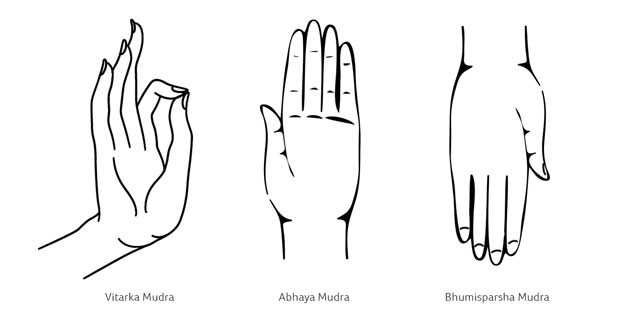
Mudras
A Show of Hands
Mudras are sacred hand gestures and expressions of inner wisdom. Each mudra represents a different action or form of energy. In meditation, mudras help maintain focus, allowing the meditator to channel a specific energy for their practice.
Mudras are also a common feature of Eastern art, as various figures and deities are often shown gesturing with a specific mudra. In fact, mudras are some of the most distinguishing characteristics, helping the viewer better understand the meaning behind a specific statue or image.
Vitarka Mudra
Thumb and forefinger touch to create a circle
A gesture of instruction, wisdom, and intellect, this mudra represents transmission of knowledge. The mudra’s circle also represents the perfection of dharma.
Abhaya Mudra
Right palm faces outward, fingers are straight
A gesture of protection, reassurance, and comfort, this mudra means “no fear.”
Bhumisparsha Mudra
The fingers of the right hand touch the ground
A gesture of determination and steadfastness, this mudra represents the strength necessary to overcome temptation.
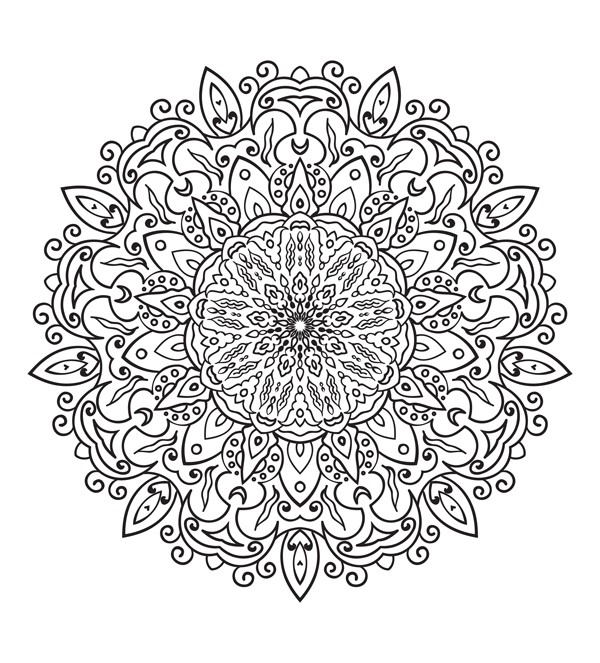
Mandala
The Multilayered Universe
A mandala is a square or circular chart with geometric designs. It symbolizes the cosmos and everything within. A mandala is constructed of concentric circles and squares that lead to a center. The eye is drawn to the center, making it a useful tool for meditation.
Mandalas play an
important role in Tibetan Buddhism, where they are used as a means of worship.
Buddhist monks create intricate mandalas of colored sand, which are then
destroyed upon completion. This act of annihilation signifies the transience of
all life: nothing is permanent, no matter how drawn we are to its beauty
or complexity.
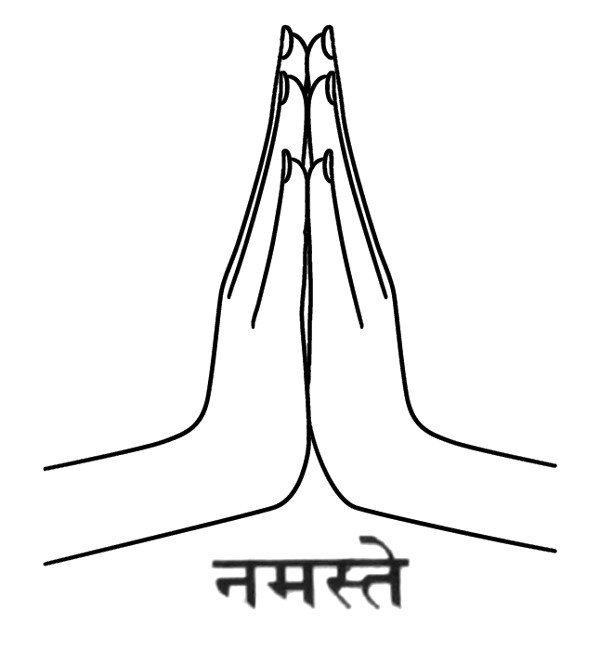
Namaste
The Divine in Me Honors The Divine in You
A traditional greeting, Namaste is a combination of two Sanskrit terms: namah(“I bow respectfully to you.”) and aste (“Let there be.”). Namaste is often spoken with a corresponding gesture. In this gesture, the head is slightly bowed and the palms are pressed together against the heart.
For many, Namaste is deeply spiritual. It refers to the belief in a divine spark that exists in all living beings. In the West, Namaste is often heard at the end of a yoga session. It translates to “The divine in me honors the divine in you.”
Namaste is more than a mere formality. It is a heartfelt expression of love and compassion. Saying Namaste with a sense of grace and humility gives birth to something beautiful: a moment in which one soul recognizes another.
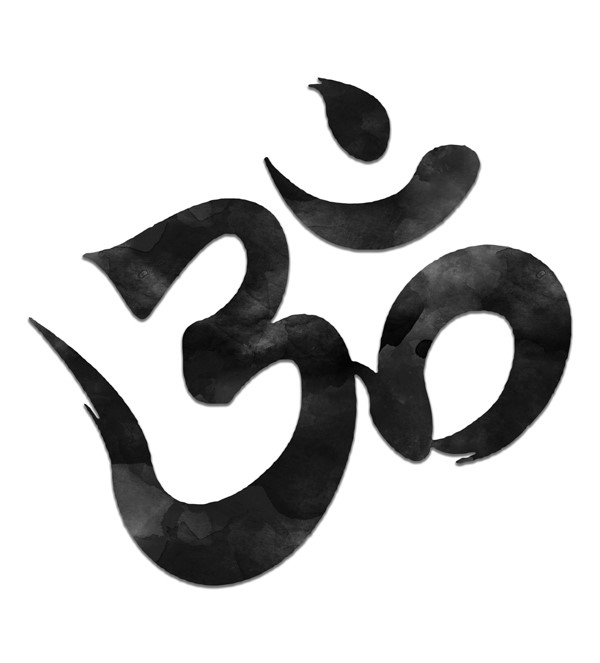
Om
The Sound of Creation
Om is regarded as the first sound that was emitted when all of the universe was created from nothing. A cosmic hum, it continues to resonate in all living beings to this very day. Thus, Om is both a primordial vibration and our connection to the divine.
Om is used as a mantra within Hinduism, Buddhism, Jainism, and Sikhism. It bears striking aural similarities to the Amen used in Christianity, and the Amin used in Islam. Regardless of religious affiliation, many find its tone alluring, even hypnotic.
It is no wonder that Om is used so often for meditation and personal ritual. It is simple to recite, yet profoundly powerful. And of course, it is beautiful to look at.
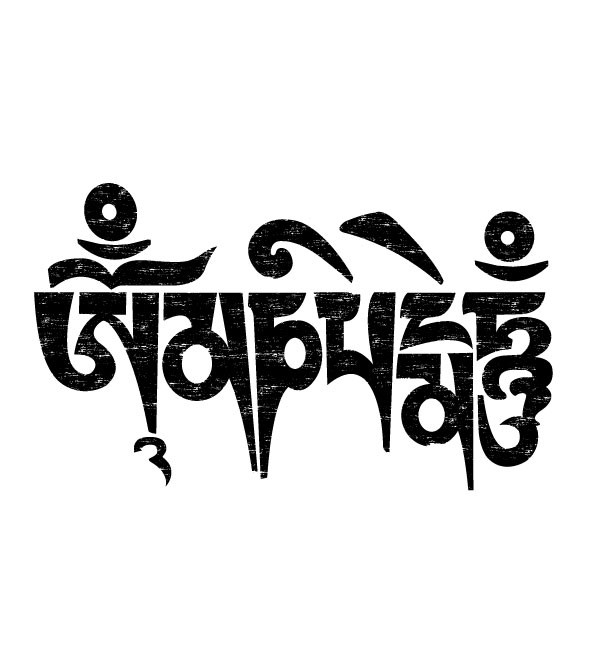
Om Mani Padme Hum
Sacred Syllables
Om Mani Padme Hum is a mantra of benevolence and is often recited to inspire compassion. The syllable “Om” represents the body, spirit, and speech of Buddha; “Mani” is for the path of teaching; “Padme” for the wisdom of the path, and “Hum” indicates the union of wisdom and the path to it. Though commonly associated with Tibetan Buddhism, meditators across various practices find this mantra inspiring. Compassion, after all, isn’t exclusive to any one belief system.
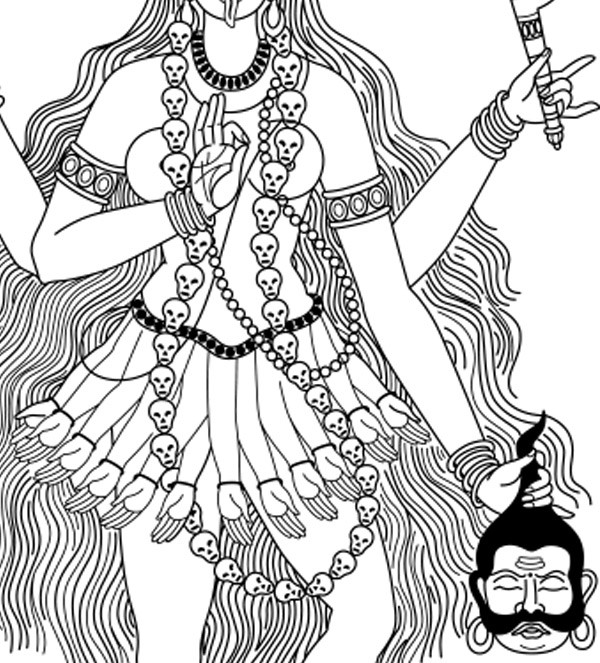
Skulls
Spotted in paintings and statues, skulls feature prominently in Eastern iconography. In both Buddhism and Hinduism wrathful deities are often depicted wearing necklaces of human skulls known as munda malas. In Tibetan Buddhism, certain tantric rituals require the use of vessels made from human skulls. These are known as Kapalas and were traditionally used to make offerings to the gods.
In Tibetan Buddhism, skulls represent bliss, the limits of human knowledge, and the Buddhist concept of emptiness, or the idea that nothing has an inherent essence. Denoting death, skulls are also a reminder of impermanence and life’s malleable nature. Because nothing is fixed and all is fleeting, one sees a skull and is reminded to embrace empathy: live today, for tomorrow is not guaranteed.
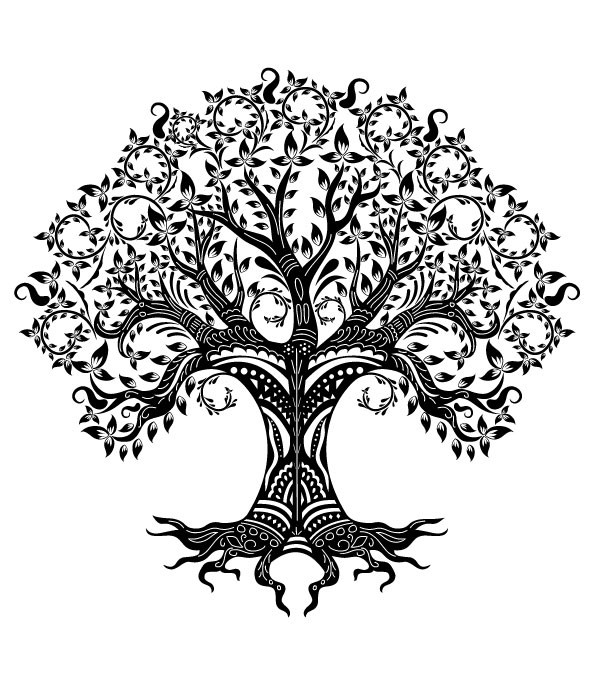
Tree of Life
We Grow Stronger Together
The concept of a sacred tree, also known as the Tree of Life, can be found in creation myths from all over the world. The Tree of Life has been spotted in art, architecture, and iconography from different cultures.
The Tree of Life is a symbol of unity, representing the idea that all life on earth is connected: though we may branch out in various directions, each of us is part of something bigger. It honors the diversity of creation while celebrating our shared origins. It is no wonder the Tree of Life is regarded as a timeless, legendary icon.

Weeping Buddha
Image of Sorrow
The figure of Weeping Buddha shows Buddha hunched over, covering his face with his hands. His image is based on the legend of a soldier who inadvertently vanquishes his only son in battle. Realizing what he had done, the soldier – who is none other than Weeping Buddha – began crying in shame.
Weeping Buddha is said to be weeping for all the suffering in the world. It is also said that if we touch his back, he will take away our grief and troubles. In return, he bestows peace and provides the strength we need to live a good life.
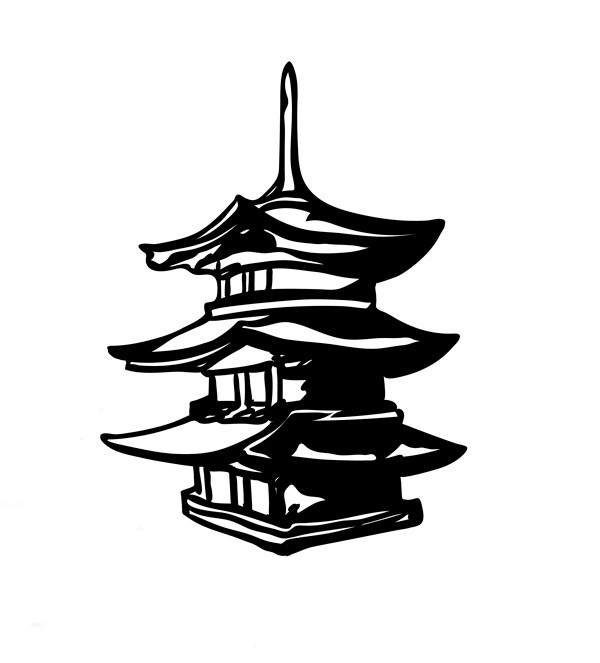
Pagoda
Towers to the Sky
Pagodas are tower-like structures often characterized by multiple eaves stacked on top of another. Seen throughout Asia, pagodas are adaptations of India’s Buddhist stupas, which were initially built to house the remains and relics of the Buddha. As Buddhism spread throughout Asia, stupas became a vital feature of Buddhist temples and their traditional dome shape slowly evolved into what we now know as a pagoda. Similar to stupas, pagodas were initially used to hold Buddhist relics, though many have since lost this function. The number of eaves on a pagoda sometimes has a symbolic meaning. In Japan, for example, it’s common to see pagodas built with five different tiers. These represent nature’s five elements: earth, fire, water, wind, and space.
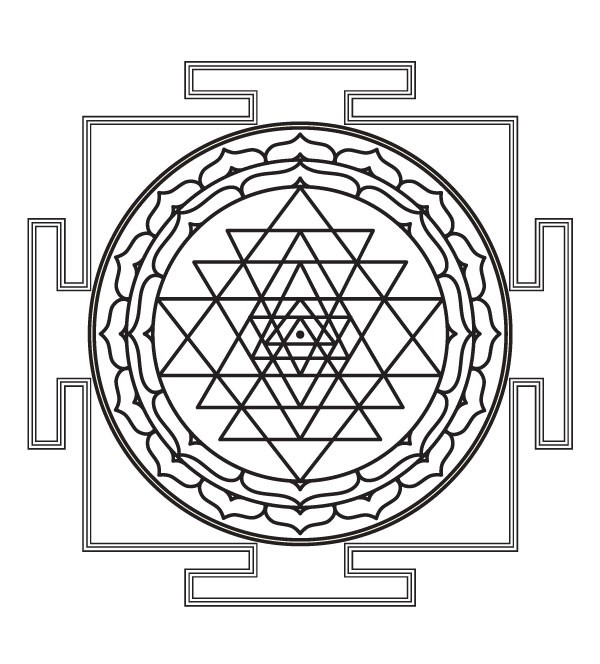
Sri Yantra
A Map to Enlightenment
The Sri Yantra is the most revered of all yantras, or mystical diagrams. It consists of nine interlocking triangles surrounded by two circles of lotus petals. In the middle is a dot, or bindu, which symbolizes the place from which all creation emerges. Its four upright triangles represent male energy, or Shiva, while the five downward facing triangles represent female energy, Shakti. Together, they represent all of the cosmos and the union of its forces.
The Sri Yantra is said to contain the path to enlightenment. Its geometry is so profound, that meditating on its patterns is said to inspire divine wisdom and a sense of oneness. For this reason, the Sri Yantra is considered a powerful tool for spiritual growth.
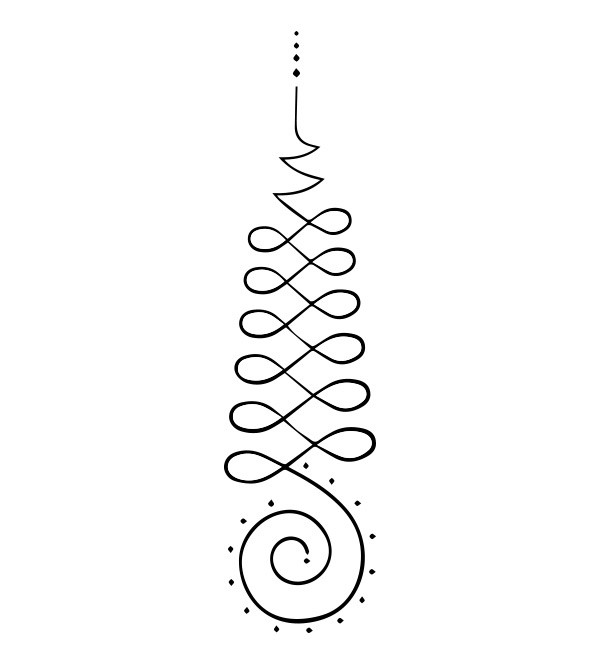
Umalome
Life is a Winding Road
The unalome symbol is a winding line which represents the path to spiritual enlightenment. There are many variations of the unalome, but the overall shape remains the same: it starts with a spiral on one end and then slowly unfurls into a series of twists and turns. Eventually, the line straightens. In some versions, the line is completed with a single dot.
All these components symbolize the various stages we encounter on our spiritual journeys. The spiral represents our mind at its early stages, while the twists symbolize the various twists and turns we encounter as we seek to gain understanding. The symbol’s steadying line mirrors our own sense of internal balance: as we learn and grow, our paths become less meandering and more focused, until we eventually find enlightenment. This final stage is summarized with the unalome’s dot, which represents the moment we achieve awakening and are released from suffering.
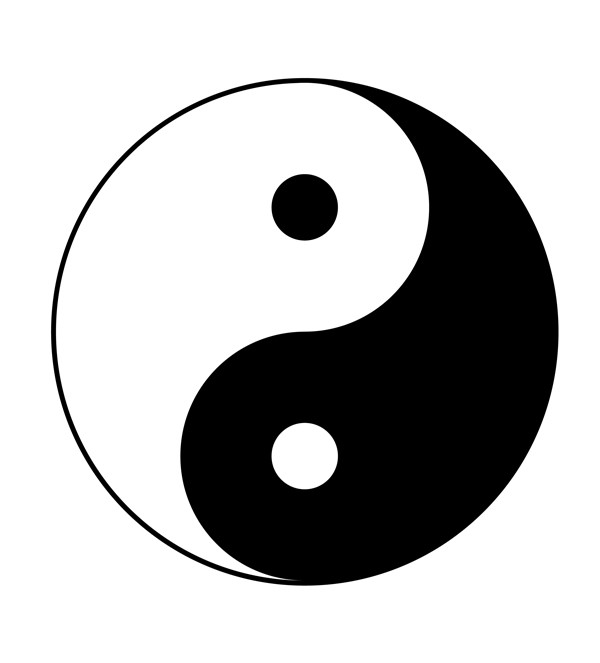
Yin Yang
Balance is Beautiful
A traditional Taoist symbol, the Yin Yang is shown as a circle with two halves, and each half contains a single element from its opposite. This configuration represents the concept of dualism, the notion that all forms of energy have an equally powerful opposing energy.
Though opposite in nature, the Yin Yang’s components are complementary: neither is superior, and one cannot exist without the other. Everything in nature is based upon this dualistic principle. The key to existence, therefore, is balanced energy, with no single element dominating over the other. Thus, the Yin Yang is not only beautiful, but reminds us that the only true path to harmony is through balance.
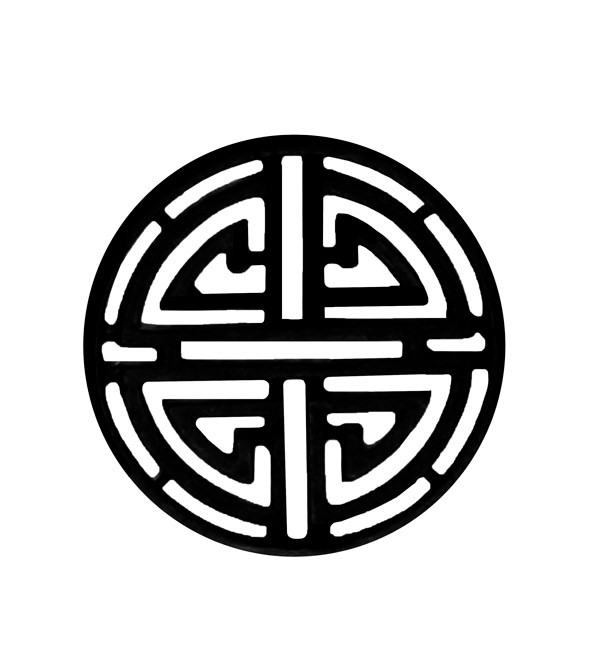
Shou
A Life Well-Lived
Shou is the Chinese character for “longevity” and can be spotted on jewelry, art, textiles, furniture, and architecture all throughout China. In Chinese tradition and folklore, longevity is considered one of the five blessings that form the foundation for a good life. The other blessings are health, wealth, virtue, and a peaceful death. In Chinese, the word for “blessings” sounds the same as the word for “bat”. For this reason, the five blessings are commonly depicted as bats, and the shou character is often accompanied by drawings of bats.
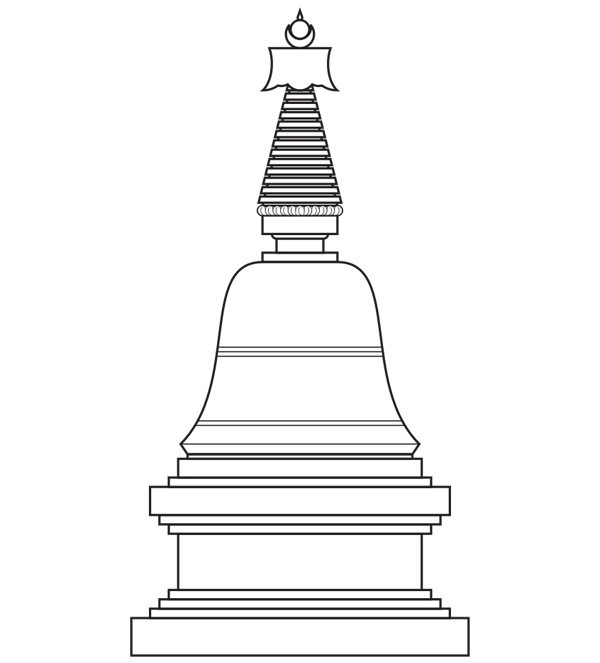
Stupa
House of Holy Relics
Stupas are religious monuments and the most iconic forms of Buddhist architecture. Inspired by India’s ancient burial mounds, the first Buddhist stupas were originally created to house Buddha’s remains. Today, they are used for worship and to commemorate different aspects of Buddha’s legacy. Some contain Buddha’s possessions or those of his disciples. Others mark a significant event in Buddha’s life. Some stupas represent his teachings while others are built as a form of devotion.
Stupas are often dome-shaped and include several components of Buddhist philosophy as part of their design. Practitioners visit stupas for a variety of reasons. One may seek good blessings, make an offering, or pray for someone in need. When visiting a stupa, it is custom to walk around its base clockwise as a form of meditation.
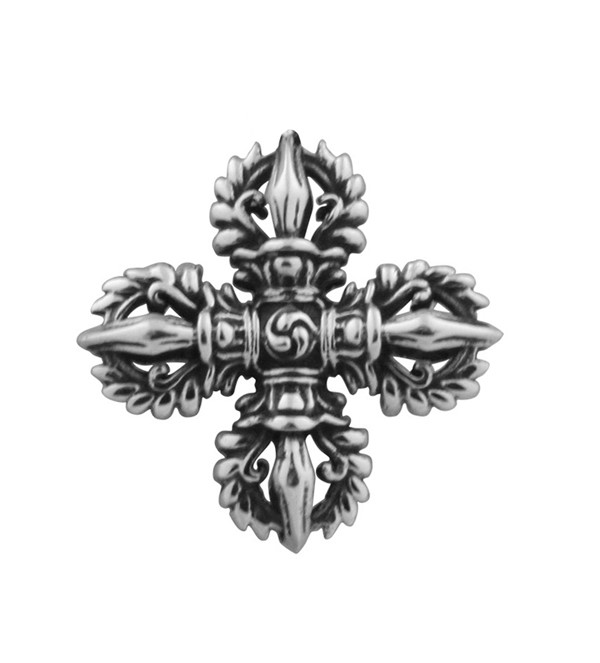
Vajra
Tool of Compassion
A ritual tool used for spiritual worship, the Vajra scepter is a combination of two powerful symbols: the diamond and the lightning bolt. The diamond, a substance which cuts but cannot be cut, represents resolute spirit. The lightning bolt, with its overwhelming force, represents great power. Together they represent compassion, the most powerful force of all and the ultimate path to enlightenment.
The Vajra sometimes appears as a Double Vajra, also known as Visvavajra. Depicted as an X or shown in vertical form (like a plus sign), it represents the indestructible foundation of the universe. The Double Vajra also stands for protection, harmony, and all-knowingness.
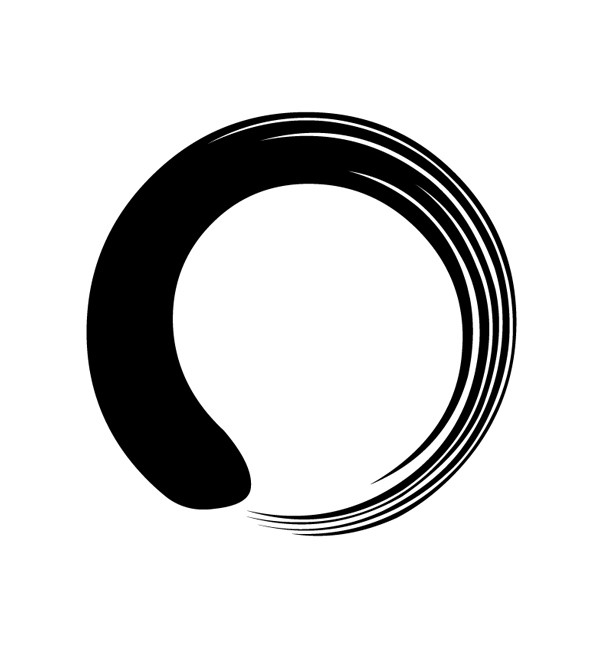
Zen Circle
Elegant, Effortless Ensō
Derived from Zen Buddhism, the Zen Circle is also known as Ensō, the Circle of Enlightenment, and the Infinity Circle. The Zen Circle is often drawn with a fluid elegance, inspiring a sense of peace and wholeness.
Though circles are simple shapes, the Zen Circle conveys some of Zen Buddhism’s more evasive concepts: enlightenment, emptiness, and the beauty of imperfection. Part of the symbol’s appeal lies in its creation: the Zen Circle is executed in a single, effortless brushstroke, often in a moment when the mind is totally free from inhibition. In this way, it represents one of Zen’s most powerful lessons: don’t try so hard, just be.
Source: BuddhaGroove




